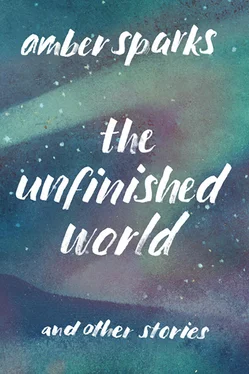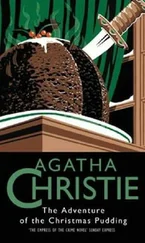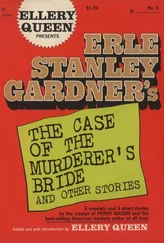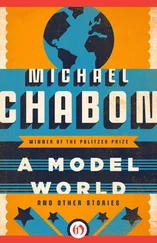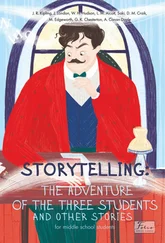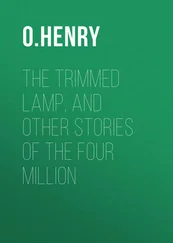Thirteen Ways of Destroying a Painting
One: The time traveler leaves her craft in a copse of trees near the center of the park. She walks quickly — as quickly as she can these days, with her aging knees and hips. She buys a flimsy little card and takes the subway downtown till she reaches the poorest part of the city. She finds the artist at home amidst the squalor, paints scattered, no hot water, barely room for a dirty mattress. Downstairs a baby cries. He is so young, the artist, a white smooth face in the dark of his walk-up. She supposes this will be easy — from the empty, hungry tilt of his face, to the stooped posture from painting under this sloped attic roof. She tells him her name, the name of a very famous sculptor: a lie. She tells him she has heard rumors, but finds he has no talent, that his paintings are no good: a lie, also. She tells him he should move back home to Modesto, become a dentist. There is money and there is security in dentistry. There is emotional stability and happiness.
The artist looks at her, aghast but defiant. The artist knows his way around this kind of truth.
When the time traveler returns to her own time, she heads straight to the third gallery on the third floor of the museum. The painting still hangs — a vast, moon-filled abstract, shapes building to a woman, curves like rolling blue hills, lit from within and without. The room is crowded with people who have seen it only on holo screens, breathless in its physical presence. The dates under the artist’s name, bookended by the long-ago b . and d . The painting is now titled In Spite Of .
Two: The time traveler counts three, and throws the dummy onto the highway as the bottle-green Ford comes barreling over the bridge. After the smash-up, she calls the young artist collect from a Modesto diner. There’s been a terrible accident, she says. Long recovery ahead, come home for good, she says. When she gets back to her present and sees the painting, she isn’t exactly surprised. The artist never had much filial feeling.
Three: The time traveler sits at dinner with the artist’s muse and the man she has hired to seduce the artist’s muse. The muse is pretty, her eyes a soft gray and her hair a bright gold. She is tall and strong, with large breasts and hips, and the man has been happy to do his job. The time traveler buys bottle after bottle of wine for the table, until the man puts his hand on the muse’s thigh and her face softens into a sweet smile. The time traveler is no voyeur, but she stands for a long time under the muse’s open window, listening to the low moans float onto the warm summer air.
She returns to her own time and the painting still hangs. Now it is titled Forgiveness .
Four: The time traveler steals the artist’s rent from his dresser drawer. His landlord, she knows, is an unyielding sort. Now the painting is smaller, much smaller, but it is still the single occupant of the room and it still sucks the air from the room and it still lights the room from within and without. Fuck, says the time traveler, and the tourists standing nearest her shift uneasily in polite Midwestern disapproval.
Five: The time traveler posts an acceptance letter from a California dental college, complete with a nine-hundred-dollar bonus if the artist enrolls in the next two weeks. The painting is bigger again, and the bio on the wall mentions, as a humorous bit of trivia, that the artist briefly considered dental school. Can you imagine, it says. The artist as a dentist! The time traveler resents the exclamation point, as do all the dentists who pass through the museum.
Six: The time traveler sets explosive charges under the apartment, and blows them when no one is home. Upon return, the painting is still there, and now a tour guide is lecturing on the painter’s subsequent madness. The artist, he says with an air of enlightened detachment, claimed to have created a series of paintings using his own waste — which his wife unfortunately destroyed. The tourists make faces.
Seven: The time traveler sets fire to the unfinished painting. The painting is still there.
Eight: The time traveler pours acid on the unfinished painting. The painting is still there.
Nine: The time traveler paints over the unfinished painting. The painting is still there.
Ten: The time traveler steals the unfinished painting and buries it in the past of the past. The painting is still there.
Eleven: The time traveler curses, cuts, spits on, slashes, saws in half, kicks, pours water over, blowtorches, burns to bits, eats the ashes of, smashes the easel around, throws out the paints for, and washes her hands of the unfinished painting. In triumph, she returns to the museum.
The painting is still there. It hangs, suspended, “like an artfully falling ocean,” says a pretentious young gentleman in a straw boater and suspenders. The time traveler thinks of artfully falling anvils instead.
Twelve: The time traveler steals the unfinished painting and takes it back to the future, where it disappears like smoke upon arrival. And the painting is still there, is still there, is still there, is still there —is still hanging in the gallery and now it is titled Perseverance . The time traveler feels the unfairness of this keenly. She has persevered. She has not succeeded. She has not made him see his own sad end, there in that bedroom with his failures and his guns and his useless, incomprehensible war with the painting. All that genius given, all that misery marked for both of them.
Thirteen: The time traveler finds the muse at her lunch. She watches the muse eat her sandwich with gusto: tomato and cheese on thick slabs of crusty bread. She watches the muse gulp down wine, watches her strong white teeth and her smooth white throat. The time traveler sighs. She was more in love with life than with him — she’d never have believed how black and long the days could stretch over her, mean and empty, like shadows in the winter. She takes out the pill, drops it into the muse’s wineglass. She leaves before the gray eyes can close. She still needs them to see, just for a moment until the timeline catches up.
The time traveler materializes in the gallery, where the painting no longer hangs. Now there is another painting, lilies on a pond, and Google finds only a retired dentist in Modesto, California. The time traveler smiles then, a soft, sweet smile, and no, her limbs don’t start to fade away, nor does that smile hang on the air, nor does she slowly dissolve, like pixels on a screen or shadows over a wall. She simply smiles, and then isn’t.
Lancelot in the Lost Places of the World
Lancelot has been summoned out of sleep to find a secret kingdom. Dreams of daffodil hair and golden summer smoke all drifted away when the earth opened above and the men shoveled him out. You have been to the Perilous Chapel, they said. You can help us find what we seek.
He does not think he has been of much help so far. The expedition is traveling in terrain he is unused to, unfamiliar with, and in his weakened state he can barely hold a sword. The men, strange in their colorful threads and accented voices, are looking for another kind of relic: the lost kingdom of Prester John. The Prester descended from the Magi themselves, it was said; he was the ruler of a fruitful land, full of new plants and animals, of new kinds of people. Nestorians and their descendants, heavy with the riches of their flight from other worlds.
These warriors with whom he travels now are not knights, but they claim a quest just the same. They are seeking this fabled hidden kingdom and all the treasures inside: the Gates of Alexander, the Fountain of Youth itself, and especially, most especially, a wondrous mirror, in which every part of a ruler’s land can be seen at a word. It is this mirror their master has sent them for. He is a foreign prince, Lancelot has been made to understand, and he desires the mirror to help him wipe out his enemies. Such men have always sought such artifacts.
Читать дальше
